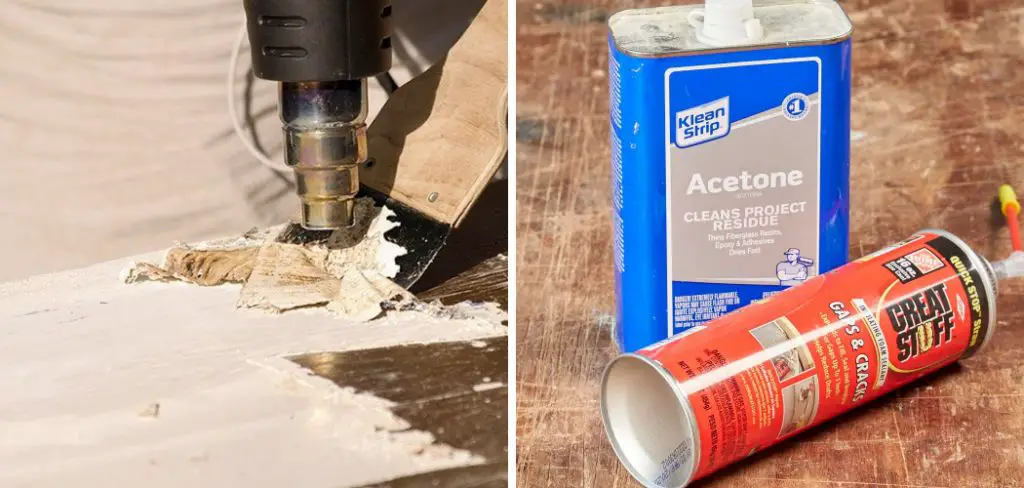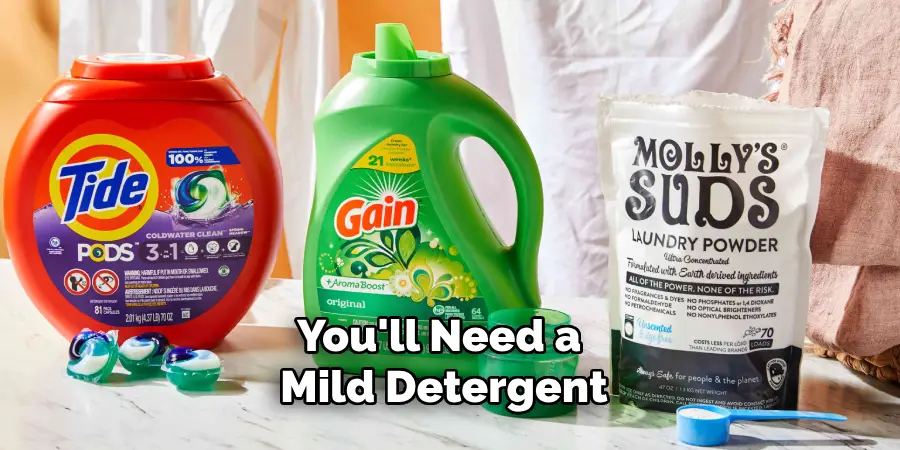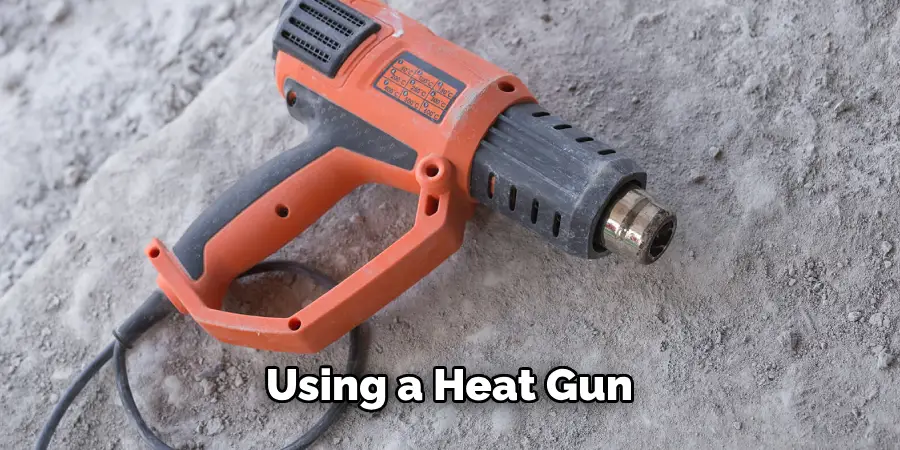Are you looking for ways to safely and effectively remove resin from metal? Resin is a sticky, viscous substance that can be difficult to remove without damaging the underlying surface.

Removing resin from metal surfaces can be daunting if you don’t know the right techniques and materials. Resin, which often hardens into a tough, sticky substance, can adhere stubbornly to metal, making it difficult to clean off with simple scrubbing. Whether you’re dealing with resin spills from craft projects, industrial applications, or accidental drops, understanding the proper methods for safe and effective resin removal is essential.
This guide on how to remove resin from metal will walk you through the tools, chemicals, and step-by-step procedures required to restore your metal surfaces to their original, resin-free condition.
What Will You Need?
Gather all the necessary tools and materials before you begin the resin removal process. This will save you time and frustration later on as you won’t have to stop in the middle of your project to find a specific item. Here are some essential materials you’ll need for removing resin from metal:
- Protective Gear: Resin can be harmful if it comes into contact with your skin or eyes, so make sure to wear gloves, safety glasses, and a face mask.
- Heat Gun or Hair Dryer: Applying heat effectively softens and loosens resin from metal surfaces.
- Scrapers: Plastic or wooden scrapers are less likely to damage the metal surface than metal ones.
- Solvents: Depending on the resin type, you may need specific solvents such as isopropyl alcohol, acetone, or mineral spirits.
- Cleaning Supplies: For the final cleaning, you’ll need a mild detergent, warm water, and a clean cloth or sponge.

Once you have all these materials, it’s time to start removing the resin from your metal surface.
10 Easy Steps on How to Remove Resin From Metal
Step 1. Prepare Your Workspace:
Before you begin the resin removal process, it’s crucial to prepare your workspace to ensure a smooth and safe operation. Choose a well-ventilated area, preferably outdoors or in a garage with open door, to avoid inhaling fumes from the solvents and heated resin.

Lay down a protective covering on your work surface, such as a plastic sheet or old newspapers, to catch any resin drips or solvent spills. This will protect your work surface and make cleanup much easier afterward.
Ensure that your workspace is uncluttered and you have ample lighting to clearly see what you’re doing. Gather all your tools and materials, placing them within easy reach so you won’t have to interrupt your work to look for something. It’s also a good idea to have a container or trash bin nearby for disposing of resin scraps and used materials.
Step 2. Put on Protective Gear:
Safety should always be your top priority when working with resin and solvents. Before you start the removal process, make sure to put on your protective gear. Wear gloves to protect your hands from the sticky resin and potentially harmful solvents.
Safety glasses will shield your eyes from splashes, and a face mask will help you avoid inhaling fumes. These precautions will help keep you safe and minimize any risk of injury or irritation.
Step 3. Heat the Resin:
Applying heat to the resin-covered area using a heat gun or hair dryer. Start at a low setting and gradually increase the heat. The aim is to soften the resin, making it easier to scrape off.

Hold the heat source a few inches away from the metal surface and move it in a circular motion to distribute the heat evenly. Be cautious not to overheat the metal, as this could damage the surface or affect the integrity of the metal.
Step 4. Scrape Off Softened Resin:
Once the resin has softened, gently remove it from the metal surface using a plastic or wooden scraper. Scrape steadily, controlled to avoid scratching or damaging the metal. Work methodically, focusing on small sections at a time. If the resin becomes tough again, reapply heat to soften it before continuing to scrape.
Step 5. Apply Solvent:
After most of the resin has been scraped off, it’s time to use a solvent to remove the residue. Select a solvent that is suitable for the type of resin you’re dealing with—common options include isopropyl alcohol, acetone, or mineral spirits.
Dampen a clean cloth or sponge with the solvent and gently rub it over the remaining resin. Allow the solvent to sit for a few minutes to break down the resin further.
Step 6. Wipe Away Residue:
Use a clean cloth or sponge to wipe away the dissolved resin. For stubborn spots, you may need to apply additional solvent and rub with a bit more pressure. Continuously check the progress and repeat the application of the solvent and wipe as necessary until all the resin residue is removed.
Step 7. Wash the Surface:
Once the resin and residue have been removed, wash the metal surface with a mild detergent and warm water to remove any traces of the solvent. Use a clean cloth or sponge to clean the area thoroughly. Rinse with clean water and dry with a soft cloth to prevent any water spots or streaks.
Step 8. Inspect for Remaining Resin:
After cleaning, carefully inspect the metal surface for any remaining resin. Look closely under good lighting to catch any spots you may have missed. If you find any residual resin, repeat the heating, scraping, solvent application, and cleaning steps as necessary.
Step 9. Dispose of Waste Properly:
Proper waste disposal is an important step in ensuring environmental safety and compliance with local regulations. First, collect all resin scraps, used gloves, cloths, and any other contaminated materials and place them in a designated waste container.

Solvents like acetone and mineral spirits are considered hazardous waste, so it’s crucial not to pour them down the drain or throw them out with your regular trash. Instead, check your local guidelines for hazardous waste disposal, including taking these materials to a designated drop-off location or scheduling a special collection.
Ensure that any containers that store solvent waste are tightly sealed and clearly labeled to avoid accidental misuse or spills.
Step 10. Maintain Your Tools:
After completing the resin removal process, take the time to clean and maintain your tools.
For reusable scrapers, soak them in warm, soapy water to remove any remaining resin, then rinse and dry thoroughly. For heat guns or hair dryers, ensure they are unplugged and cool before wiping them down with a damp cloth to clear any residue.
Proper maintenance of your tools ensures they remain in good working condition for future projects and helps extend their lifespan. Finally, store your tools and unused materials in a designated, organized space to keep your workspace neat and ready for the next task.
By following these steps, you can effectively remove resin from metal surfaces, restoring them to their original, pristine condition.
5 Things You Should Avoid
1. Using Metal Scrapers:
Avoid using metal scrapers to remove resin from metal surfaces. While it might seem like the most effective tool, metal scrapers can easily scratch or damage the metal surface. Instead, plastic or wooden scrapers are less likely to cause harm.
2. Ignoring Ventilation:
Never perform the resin removal process in a poorly ventilated area. Inadequate ventilation can lead to inhalation of harmful fumes from solvents, posing severe health risks. Always ensure your workspace is well-ventilated by working outside or using fans and open windows.
3. Applying Excessive Heat:
Be cautious about the amount of heat applied to the resin. Excessive heat can damage the metal surface and cause the resin to emit toxic fumes. Always start with the lowest heat setting and increase gradually if necessary.
4. Skipping Protective Gear:
Do not forget wearing protective gear, including gloves, safety glasses, and face masks. Direct contact with resin and solvents can lead to skin irritation, eye injury, or respiratory issues. Prioritizing your safety by using the correct protective equipment is essential.
5. Improper Disposal of Solvents:
Avoid improper disposal of solvents and resin waste. Discarding these materials down the drain or in regular trash can harm the environment and violate local disposal regulations. Follow local guidelines for hazardous waste disposal to ensure safe and responsible handling of these substances.
Conclusion
How to remove resin from metal can be a meticulous process that requires patience and attention to detail.
You can effectively and safely eliminate resin buildup by following a systematic approach involving the right tools and materials, such as heat sources, appropriate solvents, and non-metal scrapers.
Key steps like proper cleaning, thorough inspection, and responsible waste disposal are crucial for achieving a pristine, residue-free metal surface.
Additionally, taking necessary precautions, such as working in a well-ventilated area and using protective gear, ensures both safety and efficiency throughout the procedure.
Adhering to these guidelines can help you maintain the integrity and appearance of your metal items, making them ready for their next use or project.
Edmund Sumlin is a skilled author for Metal Fixes, bringing 6 years of expertise in crafting a wide range of metal fixtures. With a strong background in metalwork, Edmund’s knowledge spans various types of fixtures, from decorative pieces to functional hardware, blending precision with creativity. His passion for metalworking and design has made him a trusted resource in the industry.
Professional Focus:
- Expert in Metal Fixtures : Edmund aesthetic specializes in creating durable and innovative metal fixtures, offering both appeal and functionality. His work reflects a deep understanding of metalworking techniques and materials.
- Sustainability Advocate : He is dedicated to using sustainable practices, ensuring that every fixture is crafted with eco-friendly methods while maintaining high-quality standards.
In his writing for Metal Fixes, Edmund provides valuable insights into the latest trends, techniques, and practical advice for those passionate about metal fixtures, whether they are professionals or DIY enthusiasts. His focus on combining artistry with engineering helps others discover the true potential of metal in design.


